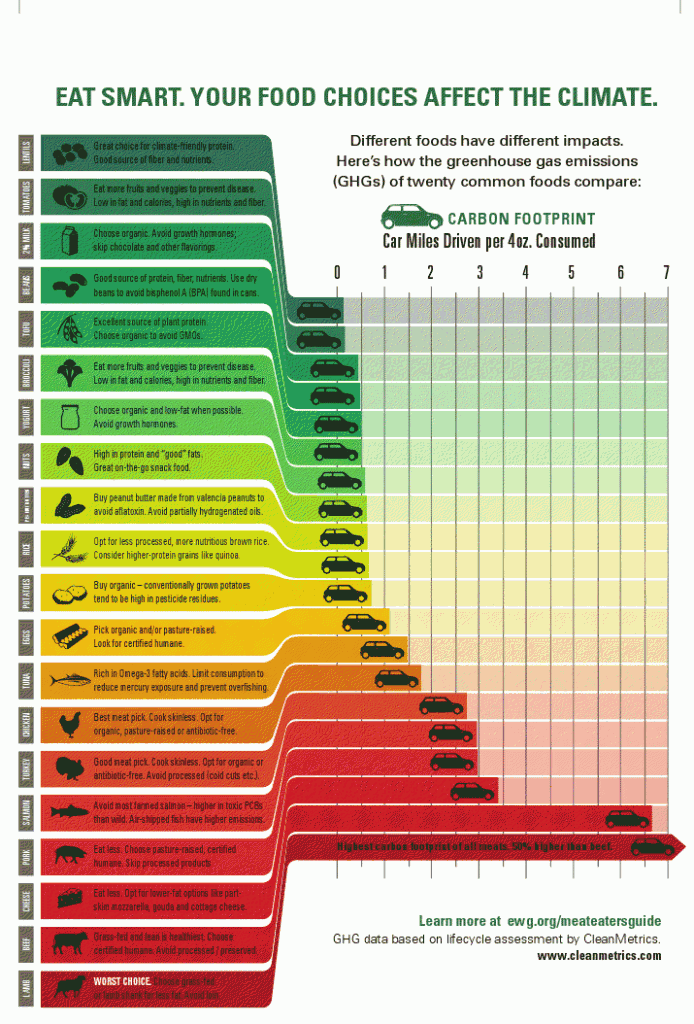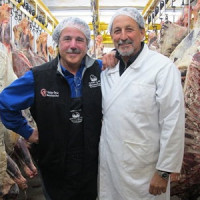[Editors Note: This is the third story in a series about meat distribution. Food + Tech Connect will run these stories every Monday for the next several weeks.]
In mid July, the Environmental Working Group (EWG) released a report entitled The Meat Eaters Guide, full of data and useful visualizations on the environmental impact of 20 “popular” protein sources.
But Lisa Frack, Social Media Manager at EWG sees ways that data can now be reconfigured and recombined with other information to create a useful new app.
The EWG guide assesses the lifecycle of meat, fish, dairy and vegetable protein, and includes easy to grasp charts like The Meat Lifecycle: From Cradle to Grave and Eat Smart which visualizes the greenhouse gas emissions of the 20 food items.
The study confirmed information most of us already know about meat, namely that it is far harsher on the environment than its protein-filled vegetable cousins. But some surprises also surfaced in the report: cheese impacts the environment more than chicken or pork, and transportation accounts for just a tiny fraction of these food’s carbon footprint (less than one percent of beef’s footprint comes from its moving from processor to store). Additionally, 20 percent of all meat sold in the U.S. ends up in the trash.
The graphics are simple and elegant, conveying a lot of information in a concise manner. And yet what if you could interact with that information in a more dynamic way, and use it while you shop?
The app Lisa Frack imagines starts simply as a consumer aid, informing customers as they shop, much like Fooducate. “But instead of using a bar code, maybe there can be a square that can tell you what you need to know about foods,” says Frack. “Like if I could find out about sliced turkey while I am standing at the deli counter, maybe I could remember what someone told me about nitrates.”
But additionally, Frack sees a more powerful element to the app, one in which shoppers could alert companies to the loss of a sale because of the information learned about a product. “The minute a consumer decides not to buy a product, the app could immediately enable the person to send that information to the company telling them they lost the sale,” says Flack. “Companies could then see what people are not buying, and we could communicate more easily to them about what we don’t want to buy.”






